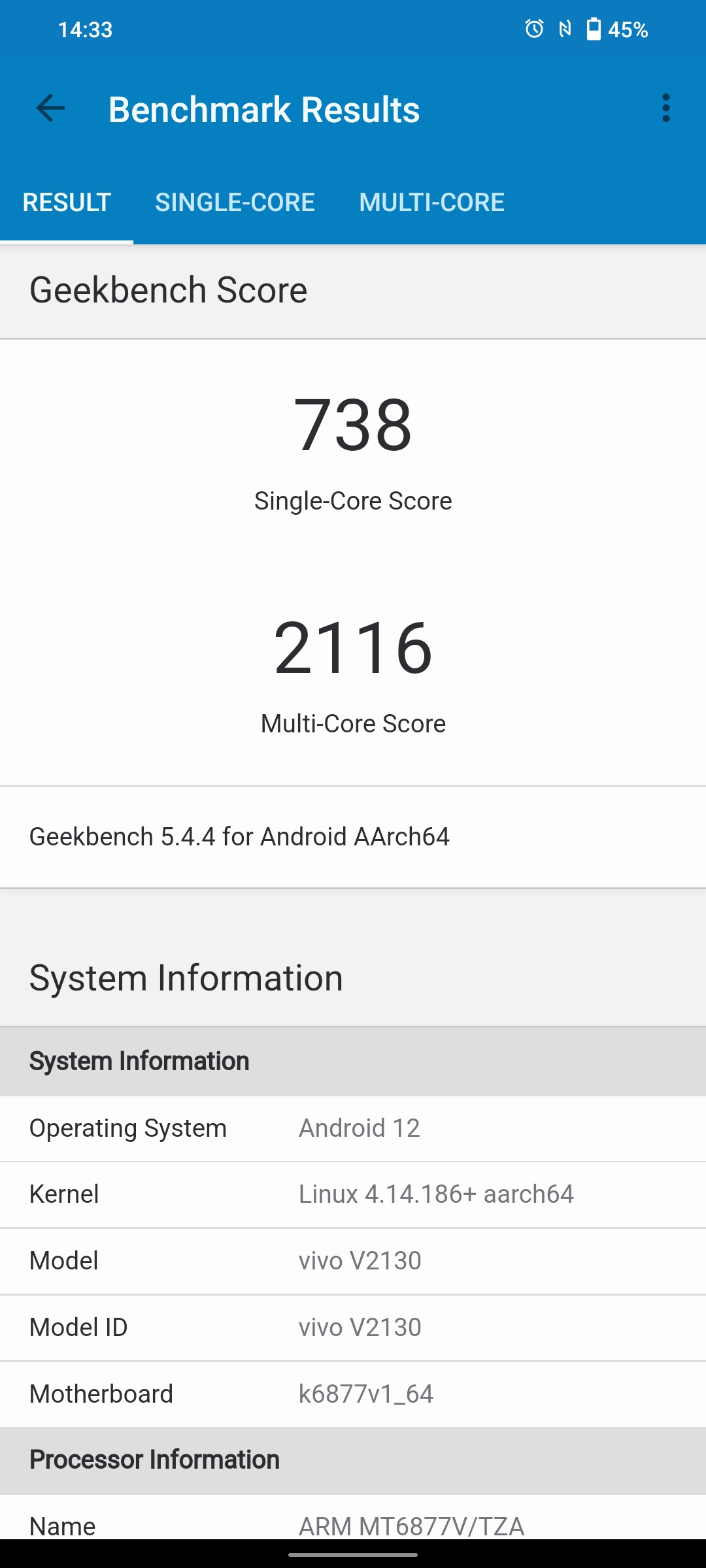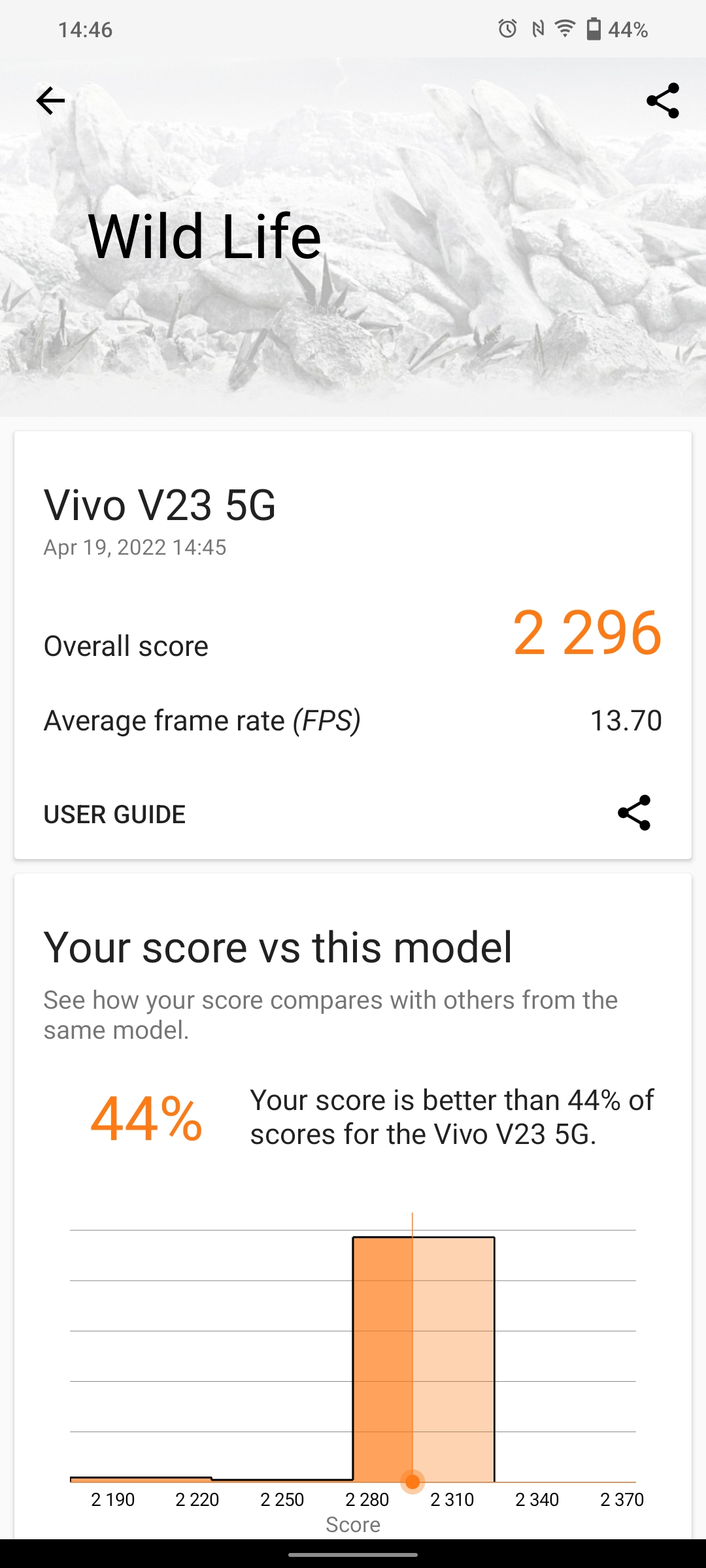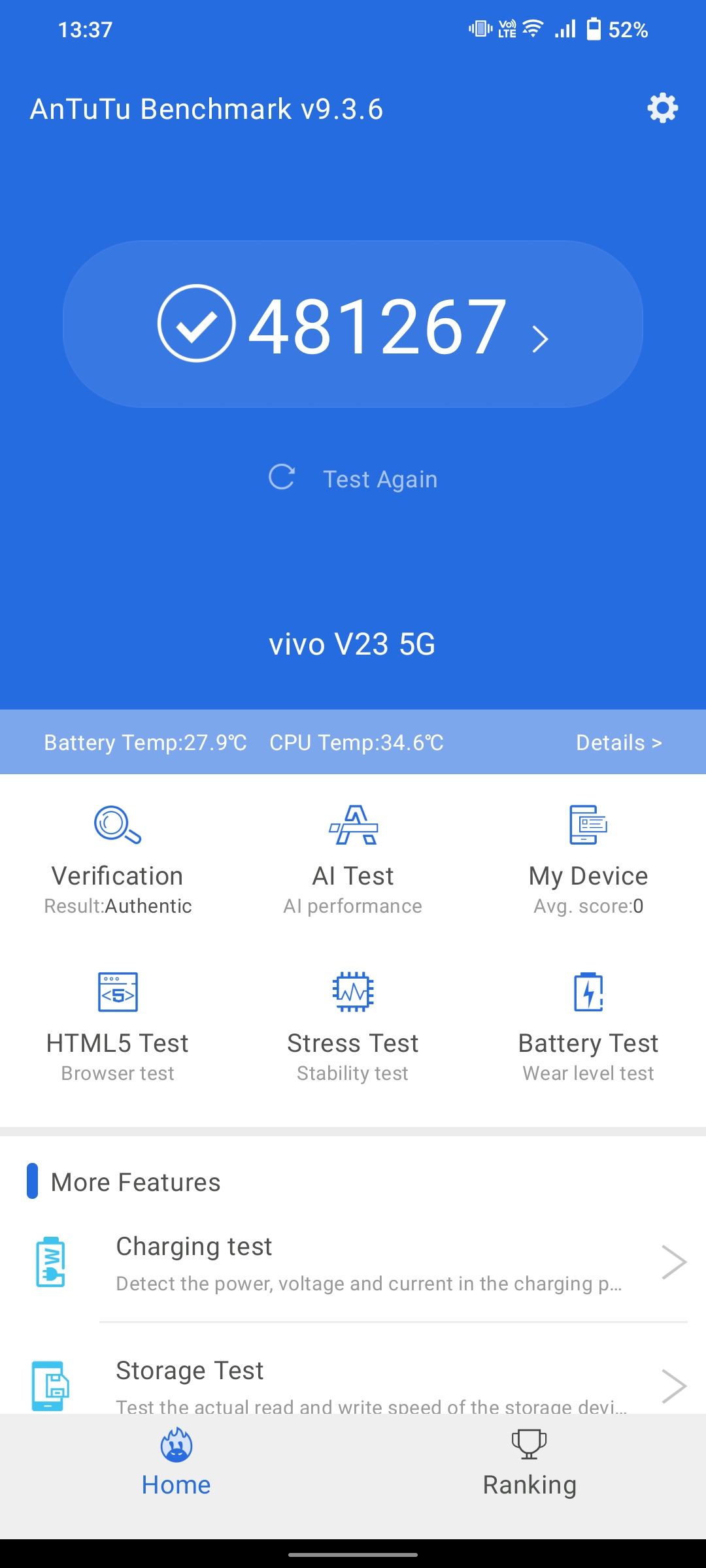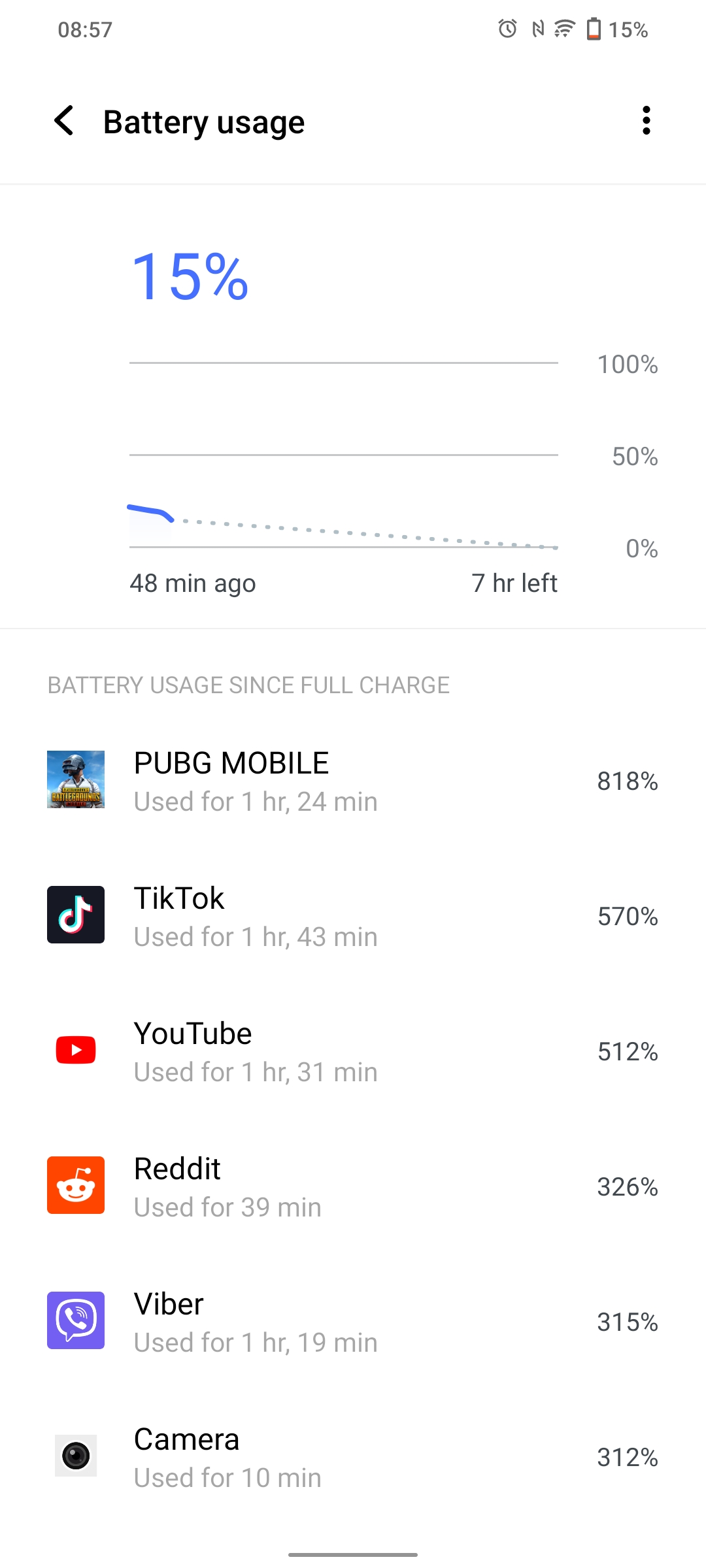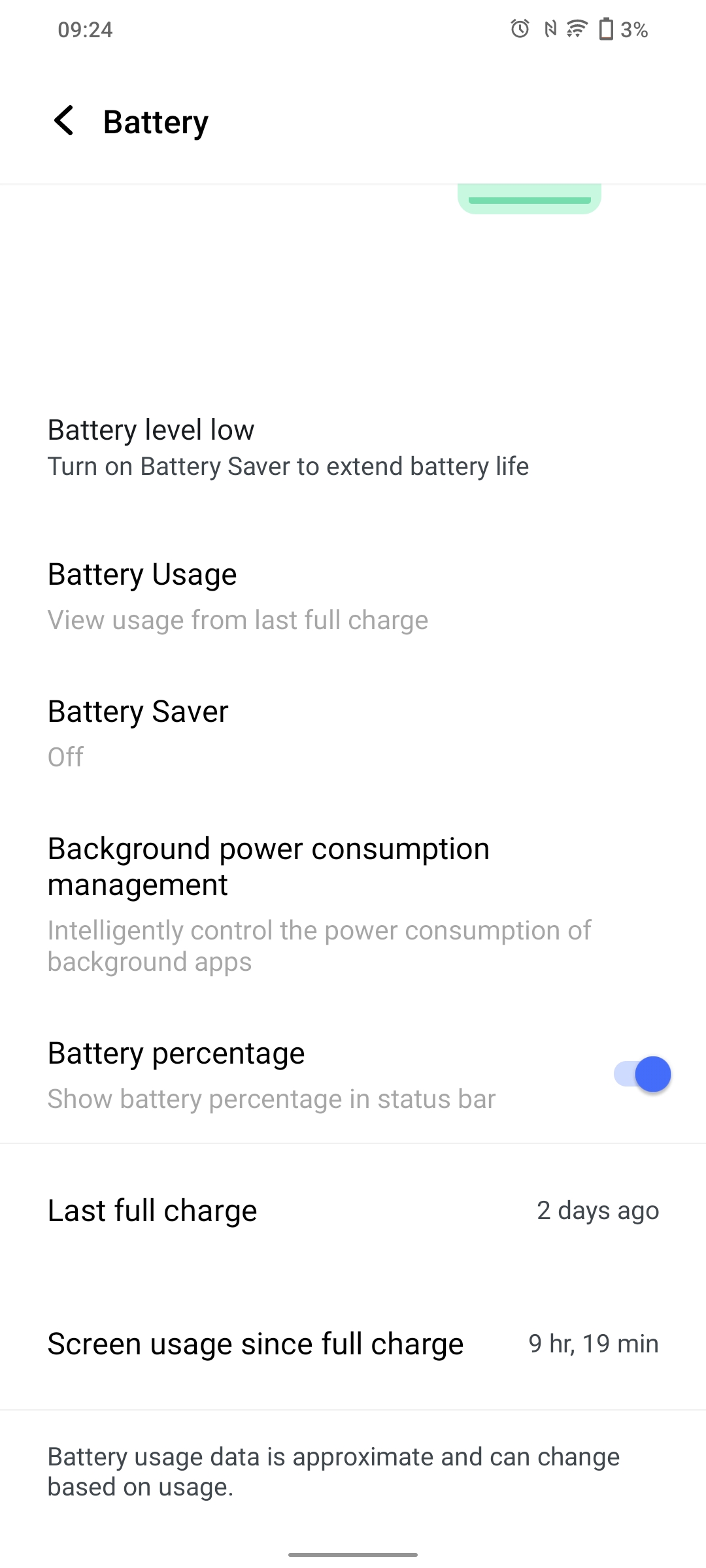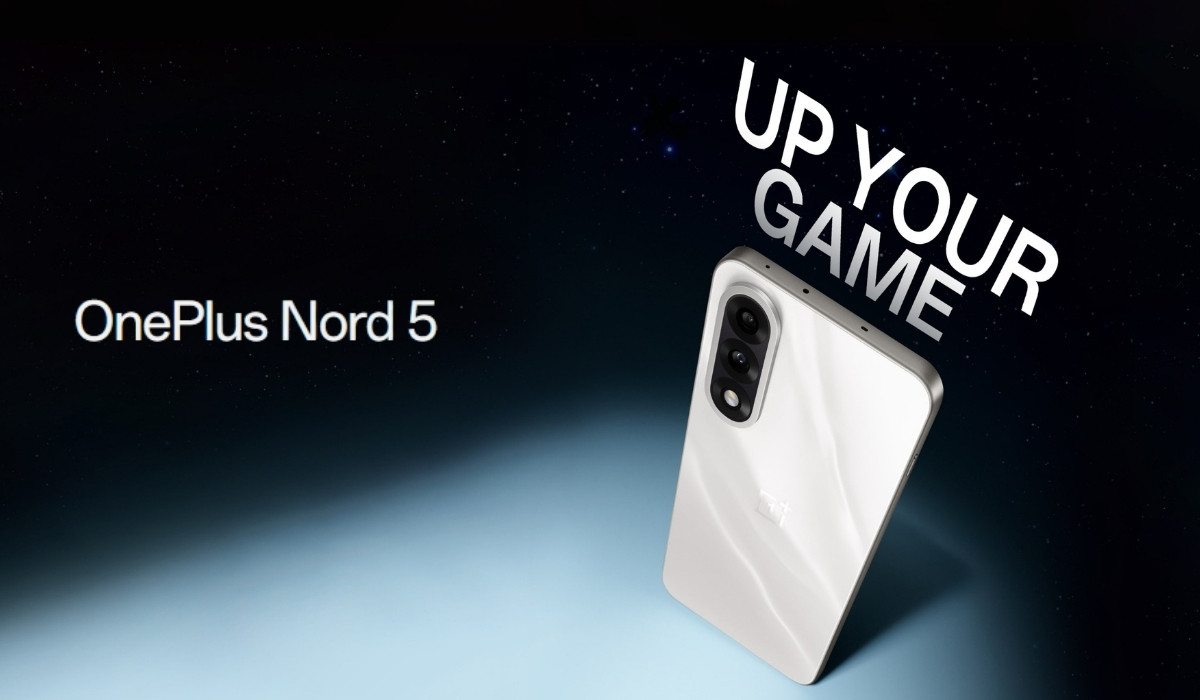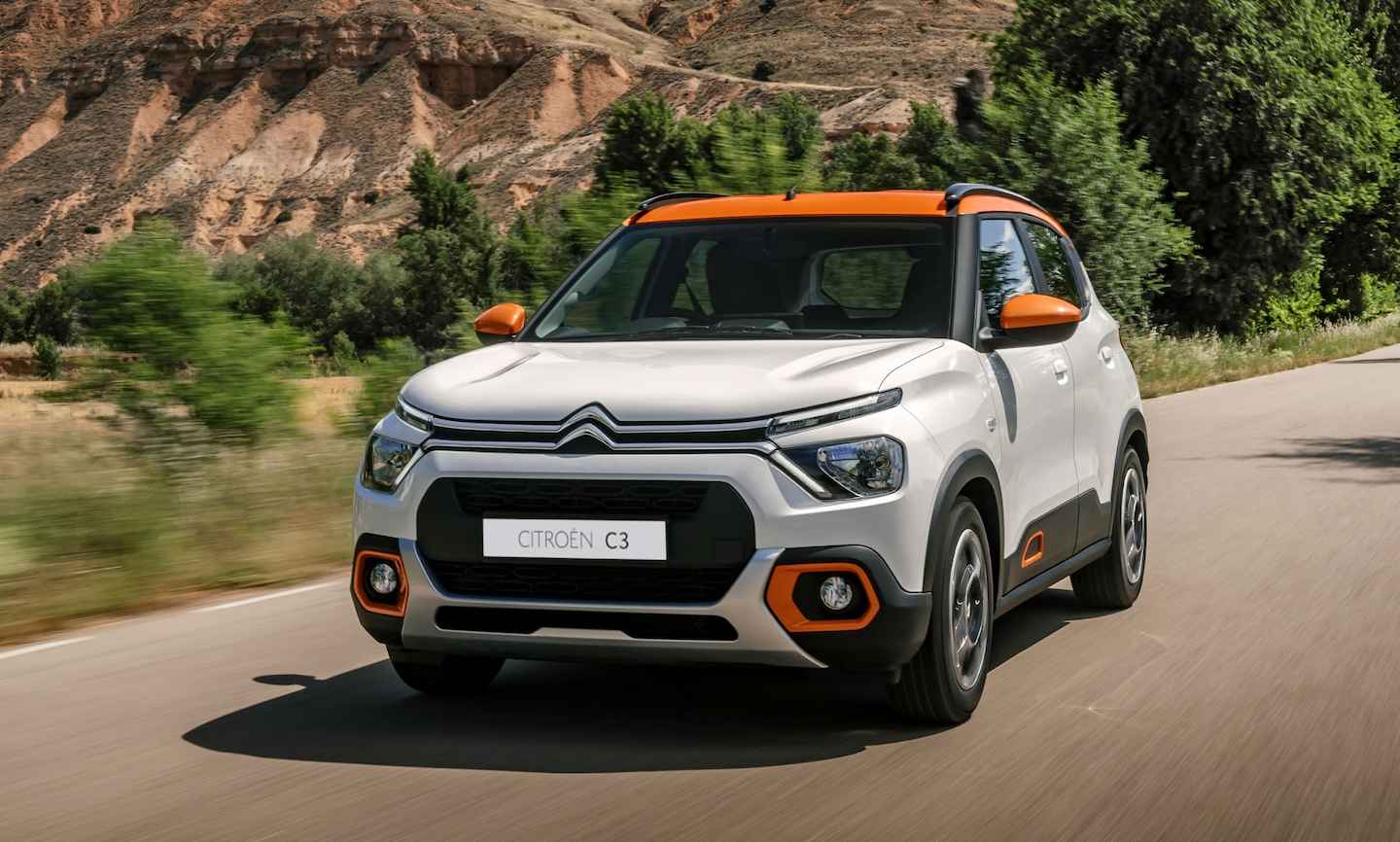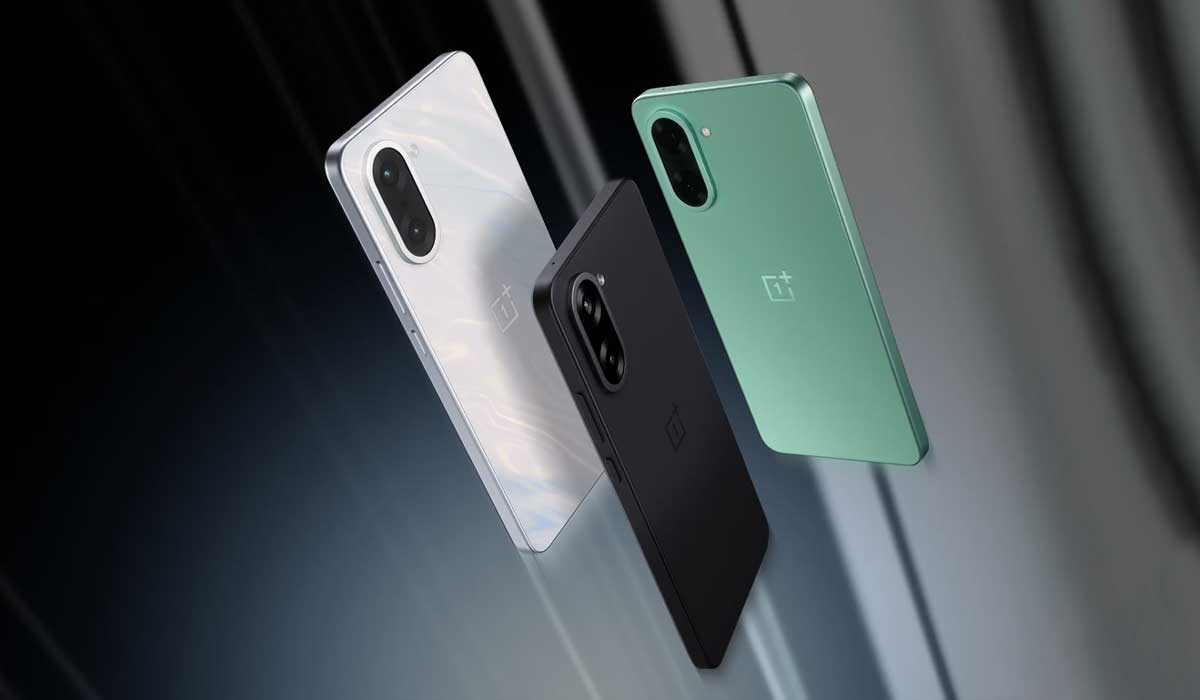Pros
- Premium design with colour changing back
- Solid selfie camera
- Ultrawide selfie camera
- Dual-tone front flash for lowlight selfies
- Smooth 90Hz AMOLED display, HDR10+ support
- Good performance
- Surprisingly good battery life
- 44W fast charging
Cons
- No stereo speaker setup
- No ingress protection
- Poor vibration motor
- Overpriced
- No 3.5mm headphone jack
- No MicroSD card support
Vivo V23 5G is a mid-range phone that was unveiled in early 2022 alongside its bigger brother Vivo V23 Pro 5G. They are the newest additions to Vivo’s V line of smartphones, which debuted in Nepal earlier this year with the launch of the Vivo V23e.
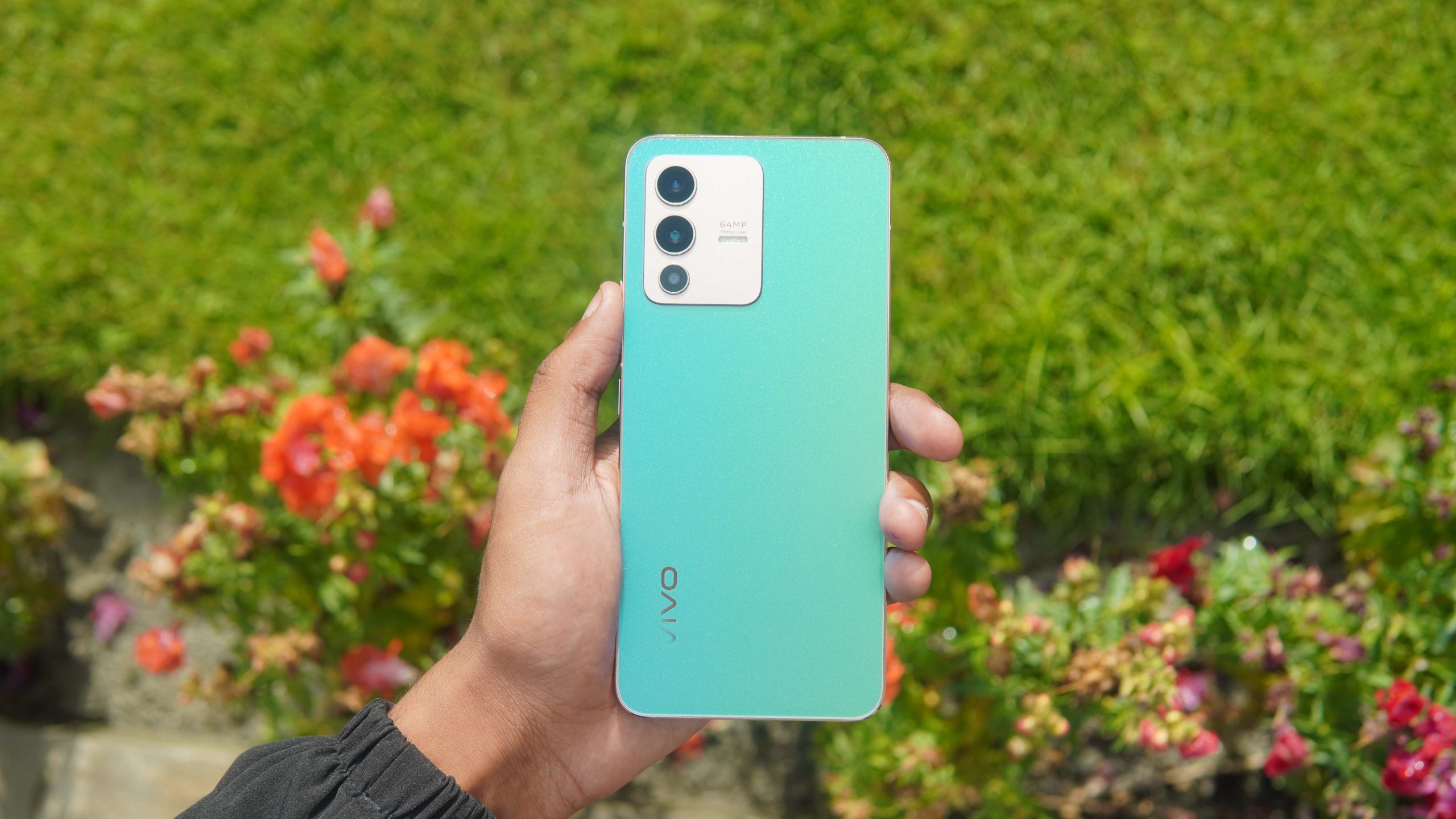
After three months of its announcement, in April 2022, the company finally made the Vivo V23 5G available in Nepal. Only the vanilla V23 is available in Nepal as of now, which is priced at Rs. 55,999 (8/128GB).
The phone made headlines with its color-changing back. It has a Dimensity 920 SoC, two front cameras, and a dual-tone front flash for selfies. The colour-changing glass surely sounds like an attractive feature, but how good is the overall phone? Is it really worth Rs. 55,999 for this phone?
I will try to cover all those questions in my review of the Vivo V23 5G.
Vivo V23 5G Specifications
- Body: 157.20 × 72.42 × 7.39 (Stardust Black) or 7.55 (Sunshine Gold) mm, 179 g (Stardust Black), 181 g (Sunshine Gold)
- SIM: Dual SIM (Nano-SIM, dual stand-by)
- Display: 6.44 inches FHD+ AMOLED, 1080 x 2400 pixels, 90Hz, 20:9, HDR10+, Schott Xensation Up glass
- Chipset: MediaTek Dimensity 920 5G (6 nm)
- CPU: Octa-core (2×2.5 GHz Cortex-A78 & 6×2.0 GHz Cortex-A55)
- GPU: Mali-G68 MC4
- Memory: 8GB RAM 128GB storage, 12GB RAM 256GB, no microSD card support
- OS: Android 12, Funtouch 12
- Rear Camera: 64 MP, f/1.9, 26mm (wide), PDAF
- 8 MP, f/2.2, 120˚, 16mm (ultrawide), 1/4.0″, 1.12µm
- 2 MP, f/2.4, (macro)
- Video: 4K@30fps, 1080p@30fps
- Front Camera: 50 MP, f/2.0, (wide), AF
- 8 MP, f/2.3, 105˚ (ultrawide)
- Video: 4K@30fps, 1080p@30fps
- Battery: Non-removable Li-Po 4200 mAh battery, Fast Charging 44W
- USB: USB Type-C 2.0, USB On-The-Go
- Misc: Fingerprint (under display, optical), compass, accelerometer, proximity sensor, gyro
- Colors: Sunshine Gold, Stardust Black
Vivo V23 5G Price in Nepal: Rs. 55,999
Vivo V23 5G Review
Design
- 157.20 × 72.42 × 7.39 (Stardust Black) or 7.55 (Sunshine Gold) mm
- 179 g (Stardust Black), 181 g (Sunshine Gold)
- Dual SIM (Nano-SIM, dual stand-by)

One of the unique selling points of the Vivo V23 5G is its design. It has a very stylish, premium design constructed of glass and metal. I have the Sunshine Gold colour, which has the colour changing back.
The back is made of a fluorite AG glass that reacts to UV rays by changing colours. When exposed to sunlight or other sources of artificial UV rays, the golden back changes its colour to greenish-blue. Even when it is not exposed to sunlight, you can notice the shift in colour if you look at it from a certain angle.
For some reason, if you’re not a fan of this colour changing back, you can choose the Stardust Black option, which has the same fluorite AG glass but does not change its colour. Interestingly, the black colour option is marginally lighter (179g < 181g) and thinner (7.39mm < 7.55mm).
Moving on, both colour options’ glass features a layer of crystals that has a pleasing sandy texture, which shines at different angles of light. The texture also prevents from attracting any fingerprint smudges.
There is a rectangular rear camera island made of aluminium, which, unlike the back glass, does not change colours. It also does not retain any grease, which is great.
The sides of the device’s metal frame are completely flat and have a glossy appearance that shows fingerprint smudges. The flat design perfectly resembles the look of the iPhone 13 series.
Everyone I encountered thought that I was legit holding the iPhone 13 Pro, because of the flat front, side, and back design. Even the front has a similar look with its iPhone 13-like display notch but smaller.
The reason for this bigger notch (compared to Android phones) is because it houses two front cameras, and a proximity and light sensor. The power and volume buttons are on the right side, where they are easily reachable.
Unfortunately, there is no IP rating. There is a rubber gasket on the SIM tray though, which should provide some protection against water.
The front has minimal side and top bezels. The bottom, however, is slightly thicker than the rest. On the top, above the notch, there is an earpiece, which, sadly, does not double as a secondary loudspeaker. It only has a single down-firing speaker along with the SIM card tray, a mic, and a USB Type-C port.
Also, the tiny top bezel has two LED flashes, one on the left and one on the right. The flashes are hidden and only appear when they are turned on.
There is an optical fingerprint sensor built into the display. The sensor is placed slightly lower than what I would prefer, but I got used to it pretty quickly. The sensor’s accuracy is good; however, there is a tiny delay. The delay is not really bothersome, but it is noticeable.
ALSO READ: Redmi Note 11 Pro 5G Review: A Solid Mid-Ranger But a Minor Upgrade
Display
- 6.44 inches AMOLED
- 90Hz
- 1080 x 2400 pixels
- HDR10+
- Schott Xensation Up glass
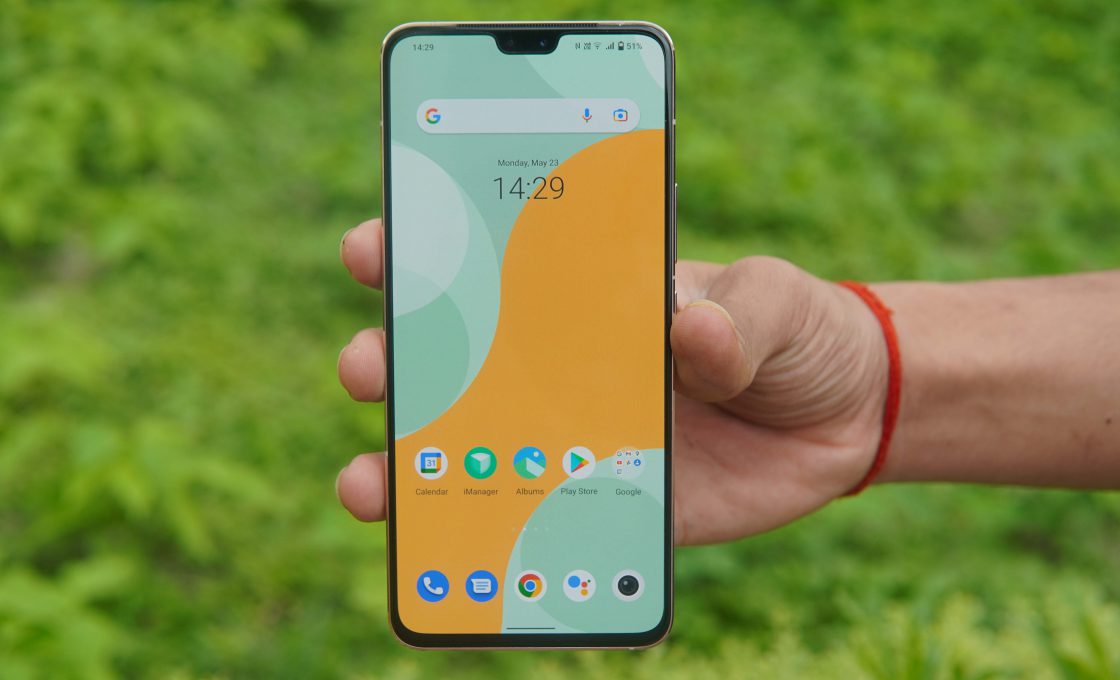
The Vivo V23 comes with a 6.44-inch Full HD+ display. It’s an AMOLED panel that supports up to a 90Hz refresh rate.
The display is also HDR10+ and Widevine L1 DRM certified. It has no trouble playing HDR videos on supported video streaming apps like YouTube and Netflix. Netflix had problems playing HDR videos at first, but that is no longer an issue.
The colours of the display are good, as you’d expect from an AMOLED display. I enjoyed watching movies on this.
Although the notch is bigger than most of the Android phones in 2022, it did not bother me much. The phone is also bright enough to be visible outdoors.
It would have been better if it supported a 120Hz refresh rate, but the 90Hz display is also very smooth. You can pick between three refresh rate modes: Smart Switch, 60Hz, and 90Hz. The second and third options, as the name suggests, force the refresh rate to the specified rate.
However, even when set to 90Hz, the display drops to 60Hz while playing games or using some other apps, such as YouTube, Camera, and some system apps.
The Smart Switch option, on the other hand, automatically keeps switching between 60Hz and 90Hz depending on the content and usage to save battery power.
Camera
- Rear Camera: 64 MP, f/1.9, 26mm (wide), PDAF
- 8 MP, f/2.2, 120˚, 16mm (ultrawide), 1/4.0″, 1.12µm
- 2 MP, f/2.4, (macro)
- Front Camera: 50 MP, f/2.0, (wide), AF
- 8 MP, f/2.3, 105˚ (ultrawide)
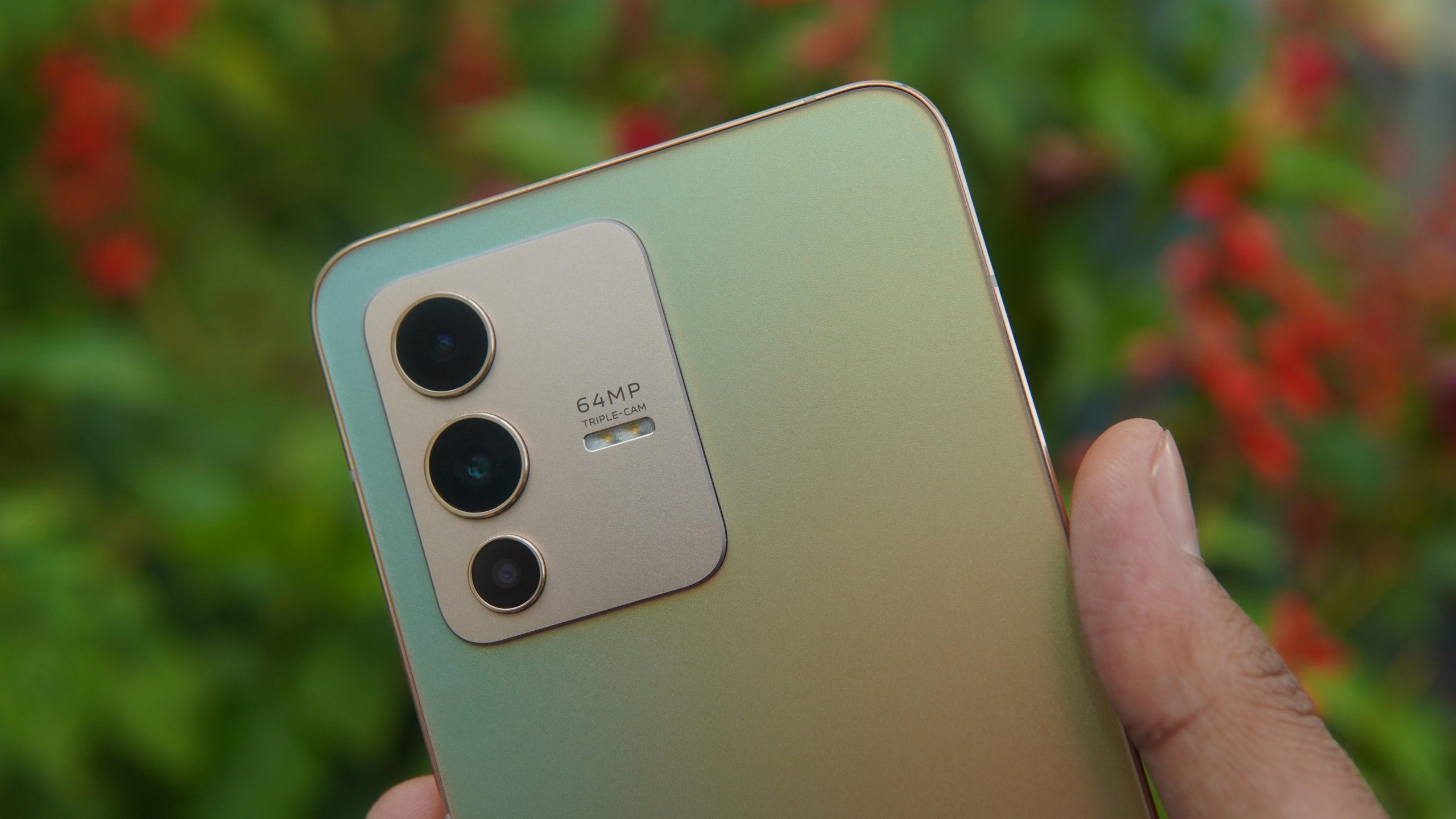
The other highlight of the Vivo V23 5G after its design is its selfie capabilities. It comes with a dual-camera setup on the front, consisting of a 50MP main camera and an 8MP ultrawide camera.
On top of that, it also comes with its own front LED lights for night selfies. There are two LEDs cleverly hidden in the top bezel. The flashes are only visible when turned on.
On the back, it includes a 64MP main camera accompanied by an 8MP ultrawide camera and a 2MP macro camera.
SELFIES
The selfies taken from the Vivo V23 5G’s main camera come out really nice. The colours and the skin tone are all pleasing to look at. It also handles the dynamic range really well.
The photos retain a good amount of detail and clarity.
Talking about the ultrawide selfies, the skin tone is slightly more towards red but overall, the colours of the photos look very similar to the original photos. If I’m nitpicking, the ultrawide selfies have slightly less clarity, sharpness, and details. But it goes unnoticed.
And there is the dual-tone front LED, which Vivo calls “Spotlight.” The front flash can come in handy when trying to take a selfie in a dark environment. Users can change the light temperature as well. There are three temperature options named Cool White, Default, and Warm Yellow.
The dual flash illuminates the subject nicely. There’s also the “Auro” option, which brightens the display for a brighter photo. It also works surprisingly well.
NORMAL PHOTOS
As for the rear camera, the main rear camera also takes good photos. By default, it outputs 16MP photos. The photos have vibrant colours, but the crispiness is not as good as it should have been.
The photos appear to be a little oversharpened, with the greens slightly boosted.
There is an option on the Camera app named “High resolution” that fully utilises the 64MP sensor. On most phones, unbinned photos are very similar to binned photos. But on the Vivo V23 5G, the 64MP photos are noticeably better.
The high-res photos have better clarity and detail. It also does not look oversharpened, and the colours are also more natural. The only drawback is that it takes a lot of memory space.
PORTRAIT PHOTOS
Taking photos from the front and rear cameras in portrait mode will have the option to blur out the background. It effectively separates the subject from the background.
The separation around the edges of the hair looks a bit unnatural, which is common in all phones. The bokeh effect is convincing, and users can also adjust the focus themselves.
By default, the portrait mode adds red to the skin tone, sharpens the eyes, smoothens the face, and slightly adjusts the shape of the face. If you’re like me, who prefers the natural look, you can turn all of that off. Or, you also have the option to play with all the beauty modes if you want.
The ultrawide selfie camera’s portrait mode beautifies the face in the same way that the standard selfie camera does, but without the background blur.
WIDE-ANGLE PHOTOS
The ultrawide camera takes decent photos. The details and colours are less appealing than on the primary camera, but the difference is not significant under good lighting.
It also has trouble keeping the lighting and shadows consistent. But overall, the photo looks good. The distortions around the corners are also minimal.
NIGHT PHOTOS
Users can access Night mode by swiping left on the Camera app. It requires users to hold the phone for a few seconds to capture a photo.
In low-light situations, taking images in Night mode produces better results than taking photos in normal Photo mode. The photos come out decent if there is a light source.
The details and clarity are satisfactory. And as with other phones, the moving phones are blurry.
MACRO PHOTOS
The macro photos are okay. It gets close to the subject, but the details and clarity are not the best. I recommend using the primary camera for the shots because it has superior colour, clarity, and a natural bokeh effect.
VIDEO
The Vivo V23 5G can shoot up to 4K video at 30fps and 1080p at 60fps. I am impressed with its video capability. The video looks great; the colours are also vibrant.
There is no optical image stabilisation (OIS), but the gyro-EIS does an excellent job of stabilising footage in 4K and 1080p.
READ NEXT: Best Mobiles Under Rs. 60,000 in Nepal: Features and Specs
Performance
- MediaTek Dimensity 920
- Octa-core (2×2.5 GHz Cortex-A78 & 6×2.0 GHz Cortex-A55)
- Mali-G68 MC4
- 128GB 8GB RAM
- no microSD card support
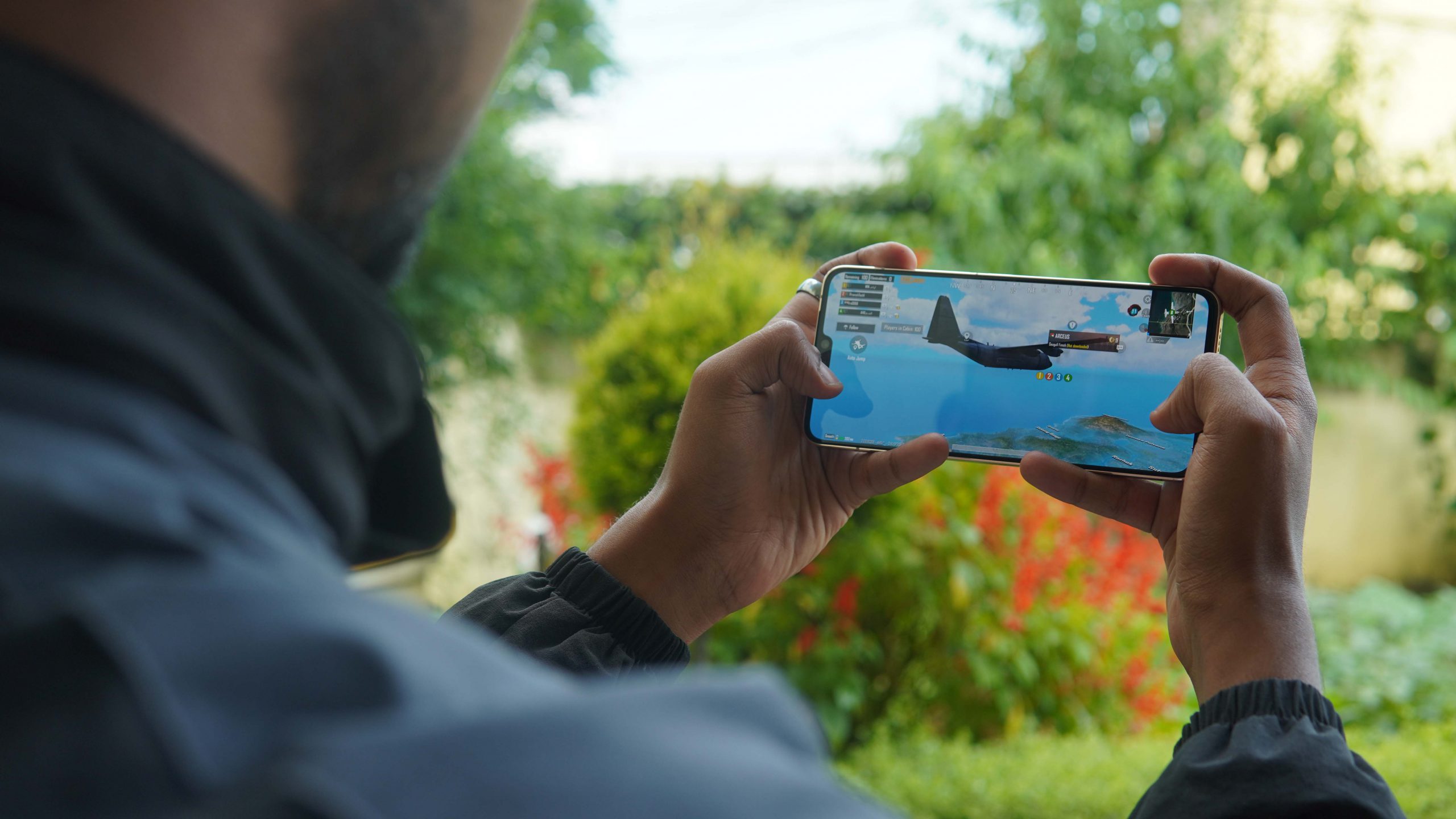
The Vivo V23 5G is powered by a MediaTek Dimensity 920 SoC. It’s based on a 6nm process node and has eight CPU cores and a Mali-G68 GPU with four cores.
The CPU cores include two Arm Cortex-A78 running at up to 2.5GHz clock speed and six Arm Cortex-A55 cores clocked at up to 2.0GHz. The CPU is paired with 8GB RAM and 128GB storage. There is also the 12GB variant, but it is not available in Nepal (as of writing this).
BENCHMARK TEST
Starting with the benchmark, we first put the CPU to the test. On Geekbench 5, it managed to score almost 750 single-core points and over 2100 multi-core points.
The single-core score is comparable to the Snapdragon 778G and MediaTek Dimensity 1200 found on the similarly priced Samsung Galaxy A52s and OnePlus Nord 2, respectively.
The multi-core performance, on the other hand, is not as good as the SD 778G or the Dimensity 1200, owing to the smaller number of big CPU cores.
Likewise, on 3DMark (WildLife), which tests the system’s GPU, it scored close to 2300. It shows that the GPU performance is similar to the SD 778G but is far behind the Dimensity 1200.
We also ran Antutu 9 test. It received roughly 480k on that. The score is lower by around 30k than the SD 778G. Without a surprise, the Dimensity 1200 outperformed the Dimensity 920 by roughly 130k points.
REAL-LIFE TEST
In real-life usage, the phone is smooth to use. It handles all the basic tasks with ease. The RAM management of the device is also excellent. The animation of the UI felt a bit slower, which is not necessarily a problem.
I should mention that there were some instances when the phone completely froze. I don’t think it’s the processor, but rather a software issue. Thankfully, this is a rare occurrence.
The phone never got too hot either. The upper portion and metal frame grow hot during lengthy sessions of intensive gaming, but it’s not as uncomfortable as some other phones.
GAMING
I tried playing PUBG Mobile on it. The phone can handle HDR Graphics at Ultra Frame Rate. When Graphics is set to Smooth, the Frame Rate can go up to Extreme.
Playing at the latter settings, it delivered a stable 58FPS. The game ran smoothly without any noticeable stutters. The average FPS dropped to 40 when I set the Graphics to HDR and the Frame Rate to Ultra.
I also tested Genshin Impact. The Graphics and FPS were set to Low (default) and 30, respectively. It delivered an average frame per second of 29.4 FPS. There were frequent small stutters here and there, but the game was playable.
Battery
- Non-removable Li-Po 4200mAh battery
- 44W Fast Charging support
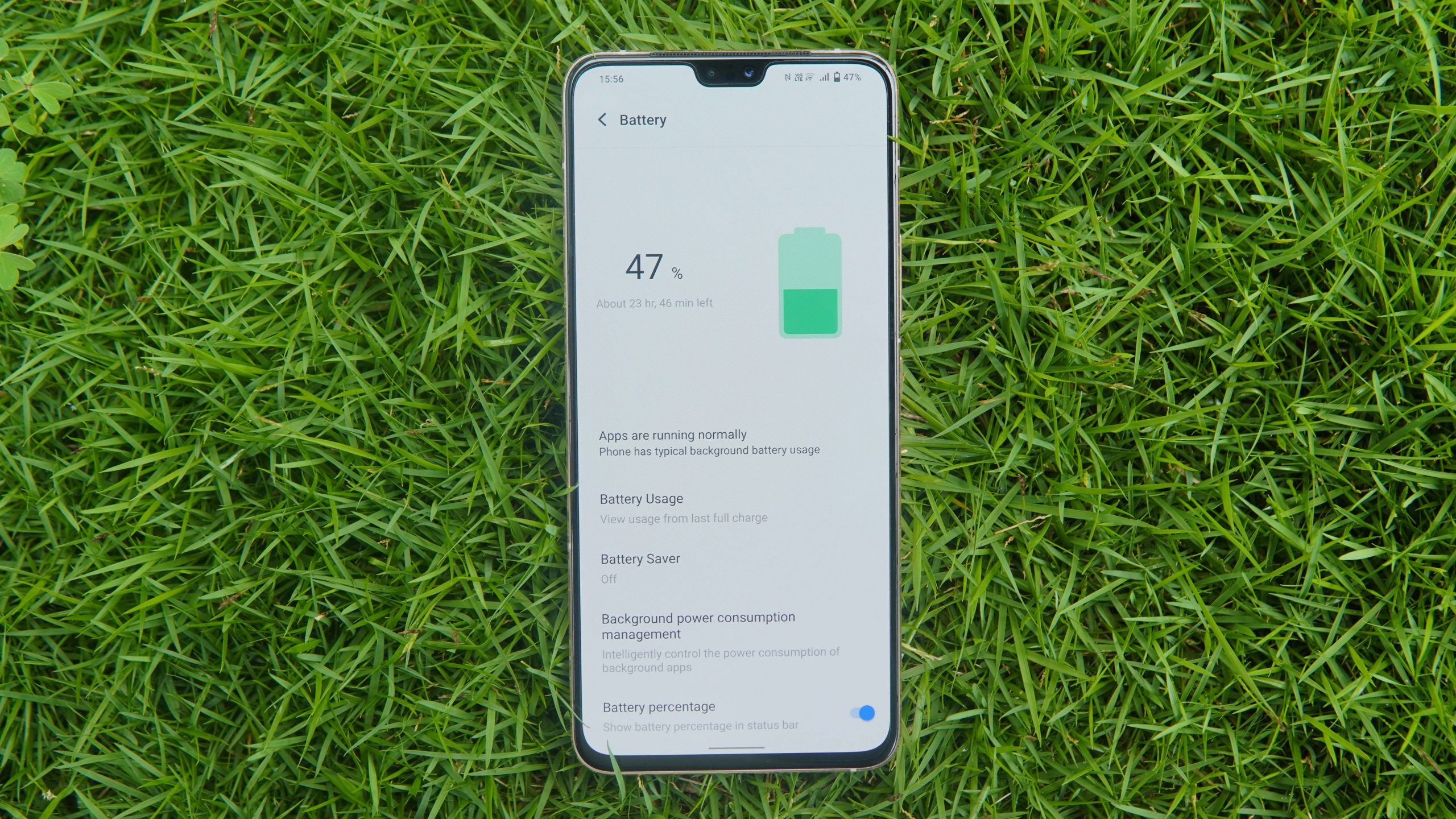
The 4200mAh battery concerned me at first. But I was pleasantly surprised by the battery life. It gave me up to 9 hours of screen-on-time in my regular use case, which is excellent.
When playing heavy long-session games, the screen-on-time dropped by half. But that also did not stop me from gaming, as it comes with a 44W fast charger.
The provided charger charges the device from less than 5% to 100% in just around an hour, which is again very impressive.
Software and Others
- Android 12, Funtouch OS 12
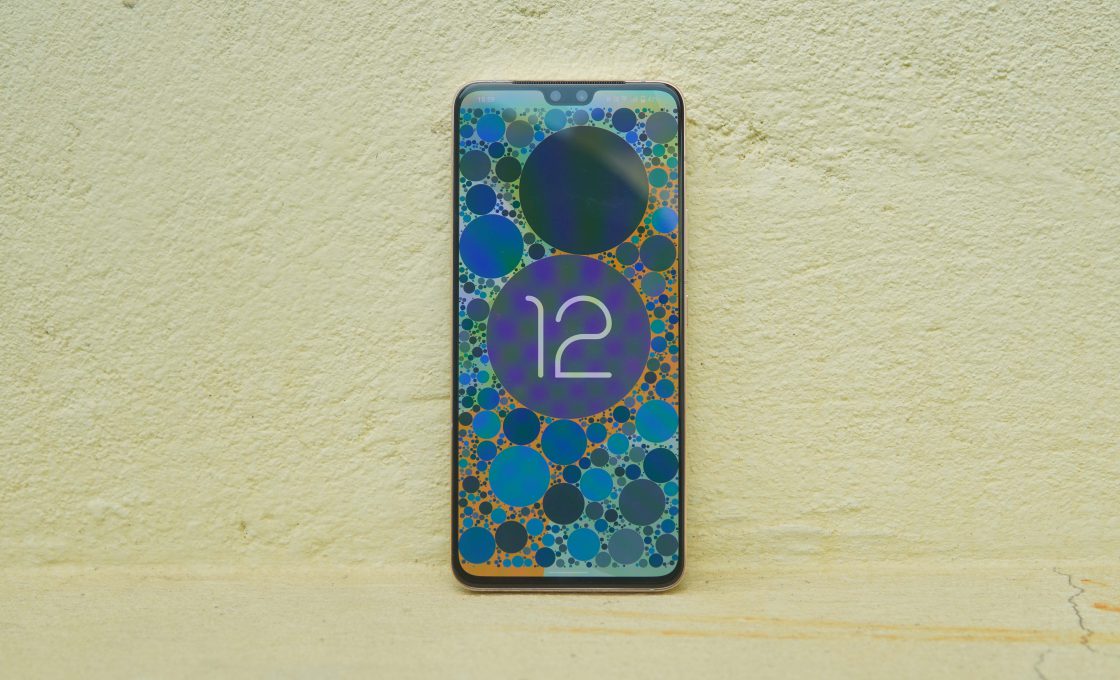
For software, the Vivo V23 5G comes with Android 12 topped with FunTouch OS. It’s good to see the smartphone comes with the latest Android OS. The FunTouch OS’s responsiveness feels a little slow to me, but it’s not a huge issue and may not even bother most users.
Other than that, I don’t have any notable complaints about the software experience. Everything worked for me as it should.
There is a single down-firing speaker. For a smartphone at this price, the device should have come with a stereo speaker setup, but it does not. Anyway, the mono speaker can get quite loud, but the quality of the speaker is not that great.
It produces average sound quality for the price. Nothing extraordinary. The speaker does not distort much at high volume, so that’s good. The vibration motor is similarly mediocre, with poor haptic feedback.
Should You Buy the Vivo V23 5G?
At first, I was sceptical about the Vivo V23 5G. The phone is priced more expensively than in India, and it is powered by the Dimensity 920 chipset, which is the same chipset found in the cheaper Realme 9 Pro+.
But having used this phone for a while, I can say that it’s a great phone to have if you care about having a unique, premium design and good selfie capability.
Vivo is known to overprice its underpowered phones. Well, I do feel that the Vivo V23 5G is also priced higher than it should be, but the performance is not that bad. In my testing, I found that the Dimensity 920 is a capable chipset.
It may not be the best performing processor in its category, but it is more than enough for normal daily tasks and casual gaming. The main selling points of the Vivo V23 are its design and camera. The design, with its colour-changing back (only in Sunshine Gold) and premium build, is the best design you can get in this price range.
The phone takes great selfies as well and comes with an ultrawide angle selfie camera and dual-tone flashlight. The display, battery life, and charging speed are also wonderful.
But the rear main and ultrawide cameras could have been better. There is also no stereo speaker, any official ingress protection, or a good vibration motor, which is disappointing for a phone at this price.
If you care about performance, you can get the Realme GT Neo 2, OnePlus Nord 2, or Poco F3 GT for around the same price.
Nevertheless, if you are after a premium-designed phone with good selfie cameras, a decent rear camera, and a good display, the Vivo V23 5G is a great option. However, the device does not offer good value for money.
READ NEXT: Vivo Mobiles Price in Nepal: Features and Specs
What do you think about the Vivo V23 5G? Let us know in the comments!
Also, watch our review of the Vivo V23 5G in Nepali.
-
OnePlus Nord 5 Launching Soon in Nepal: OnePlus IS Back?HIGHLIGHTS The OnePlus Nord 5 price in Nepal could be Rs. 68,999 (8/256GB). It has…
-
Citroen C3 Price Slashed in Nepal — Now Rs. 29.99 LakhsHIGHLIGHTS Citroen C3 price in Nepal is Rs. 29.99 Lakhs. C3 is powered by a…
-
OnePlus Nord CE 5 Launching Soon in Nepal with 7100mAh BatteryHIGHLIGHTS The OnePlus Nord CE 5 price in Nepal could be Rs. 48,999 (8/256GB) The…
















